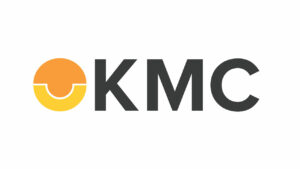PHL posts record trade gap in Aug.

The Philippine trade deficit hit a record $6 billion in August. — REUTERS
By Lourdes O. Pilar, Researcher
THE PHILIPPINES posted its biggest single-month trade deficit on record in August as imports surged while exports slowed for a second straight month.
The value of merchandise exports shrank by 2% year on year to $6.410 billion in August, a reversal from the 18.9% growth in the same month in 2021, preliminary data from the Philippine Statistics Authority (PSA) showed.
It marked the second straight month of year-on-year contraction in exports after the revised 4.1% drop in July.
On the other hand, merchandise imports rose by 26% to $12.413 billion in August, slightly slower than the 28.3% growth in August 2021 but faster than the 22.2% in July.
August saw the fastest expansion in imports in two months or since the 26.3% growth in June. It also marked the 19th consecutive month of year-on-year growth in imports.
This brought the trade-in-goods deficit — the difference between exports and imports — to $6.003 billion in August, nearly double the $3.310-billion shortfall of the same month last year. It was also wider than the $5.989-billion gap in July.
Total trade — the sum of exports and imports — grew by 14.8% to $18.823 billion in August. This pace was faster than the 11.8% in July, but slower than the 24.4% in August 2021.
In the eight months to August, exports grew by 4.4% year on year to $51.155 billion, below the 7% growth target set by the Development Budget Coordination Committee.
Imports during the eight-month period climbed by 26% to $92.966 billion, already above the 18% full-year target.
Year to date, the trade balance ballooned to a $41.811-billion deficit, wider than the $24.77-billion trade gap in the comparable eight months last year.
DROP IN ELECTRONICSRonilo Balbieran, economist of the University of Asia & the Pacific, said the 2% drop in exports in August was better than their forecast of a 4% contraction.
“If you are a manufacturer/exporter, it will take time for you to actually repurpose or expand your production capacity and production numbers for you to absorb this depreciation levels,” Mr. Balbieran said in an interview with One News’ BusinessWorld Live.
He noted that the ballooning deficit in August is a “definite sign” of growth in capital formation.
“More or less, we are importing a lot of construction materials, that is why materials prices are at its all-time high,” said Mr. Balbieran.
Security Bank Corp. Chief Economist Robert Dan J. Roces said the contraction in exports is still due to the “sustained drop in electronics exports given weak external demand and constrained local production.”
In August, outbound shipments of manufactured goods, which accounted for 82.6% of total exports, contracted by 0.4% year on year to $5.292 billion.
Electronic products, which made up 69% of manufactured goods and more than half of total exports that month, fell by 1.6% to $3.660 billion. Three-fourths of electronic product sales came from semiconductors, which decreased by 0.1% to $2.738 billion.
The United States, which accounted for 16.3% ($1.048 billion) of the total receipts, was the top destination of locally made products. It was followed by Japan (14.5% or $931.352 million), and China (13.1% or $839.184 million).
Philippine Exporters Confederation, Inc. President Sergio R. Ortiz-Luis, Jr. said the exports performance in August was due to the “low base effect.”
“The 2% contraction does not show significance in August export print. Slowly but surely, the export increases. The shortfall does not create a trend,” he said in a phone interview.
Mr. Ortiz-Luis also added that the peso’s weakness is helping exporters to be competitive.
“But for importers, they were affected most because most of them are into electronics and garments which comprised 60% of raw materials,” Mr. Ortiz-Luis said.
Data from the Bangko Sentral ng Pilipinas showed the Philippine peso averaged P55.7501 to a US dollar in August, a bit stronger than P55.8925 monthly average in July. As of Oct. 10, the peso returned to the record low of P59 against the greenback.
Meanwhile, the country’s orders of raw materials and intermediate goods rose by 15% to $4.924 billion in August. These accounted for close to 40% of the total August import bill.
“Import growth remained at double-digits due to still elevated global commodity prices plus buoyant import demand with continued reopening of the local economy, and as such import performance may stay robust for the rest of the year,” Mr. Roces said in an e-mail.
In August, imports of capital and consumer goods were valued at $3.349 billion (up 15.2%) and $2.151 billion (up 45.9%), respectively. Mineral fuels, lubricants and related materials increased by 75.6% to $1.931 billion from $1.099 billion last year.
China was the country’s main source of imports, with a 21.8% share ($2.706 billion) of the total bill, followed by Indonesia (10.8% or $1.346 billion) and Japan (8.1% or $1 billion).
Analysts expect better trade performance in the coming months.
“However, expect the record trade deficit to hover near current levels and continue to put pressure on the peso,” Mr. Roces said.
Mr. Balbieran said that if this higher exchange rate environment persists over the next six months, exporters should plan their production appropriately. “I can see another two to three months for exporters to actually feel that particular confidence that they will be able to export more with a higher exchange rate,” he said.
For Mr. Ortiz-Luis, trade will continue to grow in the coming months. “We expect exports to hit $100 billion at the end of the year.”




